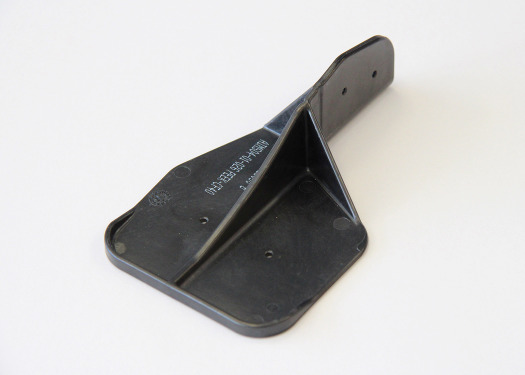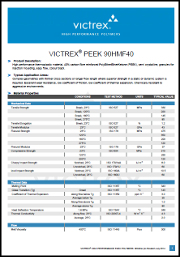 |
| October 06, 2015 | Volume 11 Issue 37 |
Designfax weekly eMagazine
Archives
Partners
Manufacturing Center
Product Spotlight
Modern Applications News
Metalworking Ideas For
Today's Job Shops
Tooling and Production
Strategies for large
metalworking plants
Engineer's Toolbox:
Plastic replaces aluminum in new Airbus door bracket

The Airbus A350 XWB medium-to-long-haul passenger jet features wider panoramic windows, larger overhead stowage compartments, and the latest in-flight entertainment and connectivity. The A350 XWB also features the latest in aerodynamic design, carbon-fiber fuselage and wings, and new fuel-efficient Rolls-Royce Trent XWB engines.
Airbus Helicopters is replacing aluminum in a fitting in the aircraft door of the Airbus A350-900 wide-body, long-haul passenger jet with a high-modulus, carbon fiber-reinforced high-performance polymer. The brackets, now manufactured from VICTREX PEEK 90HMF40, have been developed by Airbus Helicopters and are in serial production for commercial use after receiving the relevant component qualification.
The successful substitution of metal has resulted in a 40% reduction in weight and costs. The injection-molded polymer solution replaces the higher-cost manufacture of the bracket machined from an aluminum block.
The fiber-reinforced polymer (FRP) structure of the A350 XWB's aircraft door uses an outer skin coupled with a bracing structure on the inside. A fitting, now manufactured from VICTREX PEEK 90HMF40 thermoplastic, connects the outer skin to points on the internal bracing structure. The two components form a box-type support structure to exploit the maximum geometrical moment of inertia.

"In terms of the standard load case (i.e., the internal cabin pressure), this point-type joint reduces the deformation on the outer skin, thereby maintaining the aerodynamic quality of the aircraft door," says Christian Wolf, head of Airplane Doors Research and Technology at Airbus Helicopters. "All components in the aircraft door are of a singly redundant design. If a component near the bracket fails, the bracket will provide an alternative path for transferring structural loads and is therefore part of the aircraft's primary structure."
By using the carbon fiber-reinforced, high-performance VICTREX PEEK 90HMF40 polymer instead of the aluminum previously used, Airbus Helicopters has successfully manufactured an equivalent component that provides a range of benefits. Weight and production costs have each been reduced by 40%. In addition, joining the PEEK component, instead of an aluminum component, to a thermoset makes drilling much easier. Optimized carbon fiber-reinforced plastic (CFRP) drills improve the quality of the holes compared with the previous solution.
Specified by Airbus, VICTREX PEEK 90HMF40 also easily withstands the moisture that continuously accumulates inside aircraft doors, whereas aluminum, which is prone to corrosion, needed a special surface coating to prevent corrosion.
Finally, "The expertise gained from the initial use of fiber-reinforced PEEK can be transferred to other components and to other areas of application with similar requirements," says Wolf.
In the aerospace business, the "design and build" process (e.g., development in accordance with a given specification) is a possible option for producing structural components. In this process, the developer has additional freedom in matters such as the selection of materials. "90HMF40 is a special, high-performance thermoplastic that is also suitable for load-bearing structural components as now used for the first time in the Airbus A350-900 and therefore in regular airline operations," says Uwe Marburger, aerospace business development manager at Victrex. "This first application is certain to be quickly followed by others."
Operating worldwide, the UK-based Victrex company has over 35 years of experience and offers not only solutions based on polyaryletherketones (PAEK), but also consistent product quality, as well as security of supply.
Aerospace designers and manufacturers benefit in many ways from the use of VICTREX PEEK 90HMF40. This high-performance polymer with high-modulus fibers (HMF) is based on the Victrex 90-Series polyaryletherketone, which is primarily used in very thin-walled, injection-molded components. High-strength components can be manufactured from this free-flowing, easily processed material. Its properties cannot be matched by those of the standard grades. For example, 90HMF40 has up to 100 times longer fatigue life and up to 20% greater specific strength and stiffness than aluminum 7075-T6 under the same conditions.
For more information about VICTREX PEEK 90HMF40, please visit www.victrex.com. You can download a product data sheet PDF here or by clicking on the sheet cover at right.
Source: Victrex
Published October 2015
Rate this article
View our terms of use and privacy policy

